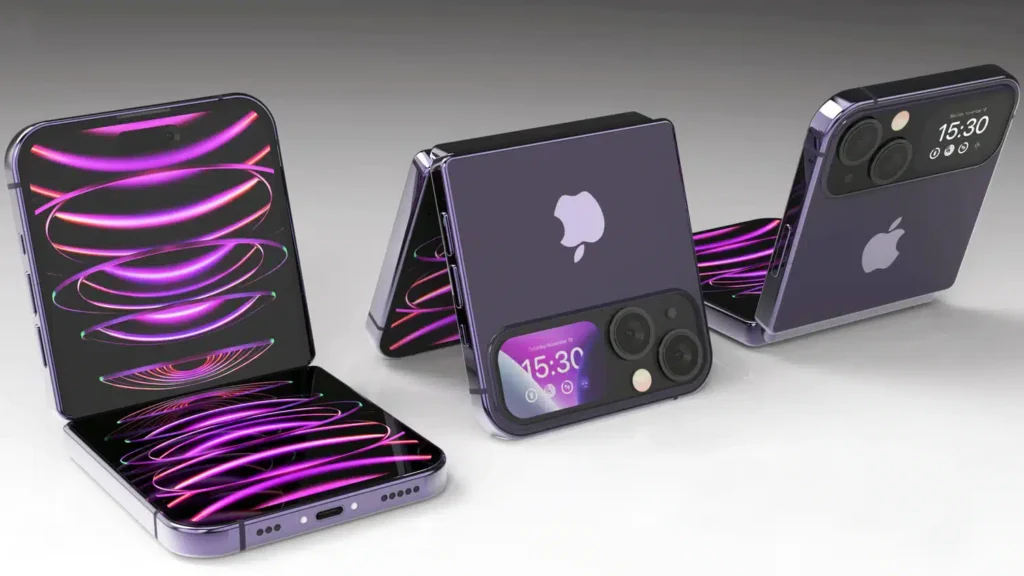Apple’s Foldable iPhone: Launch Delayed Amid Technical Challenges. Apple’s journey towards releasing its first foldable iPhone has encountered new challenges, casting doubt on the future of this much-anticipated device. Initially targeted for a late 2026 debut, Apple has reportedly delayed the launch to the first quarter of 2027. The delay stems from numerous technical issues, particularly in sourcing foldable displays that align with Apple’s stringent quality standards.
WWDC 2024 to Unveil iOS 18 with Advanced Topographic Maps
Alpha Biz, through DigiTimes, has shed light on Apple’s decision to postpone the foldable iPhone project. This decision was influenced by difficulties in acquiring essential components that meet the tech giant’s high expectations. The challenges have been significant enough to push the project’s timeline back, leaving the door open to the possibility of an official cancellation.
Despite these setbacks, it is understood that Apple remains committed to exploring the foldable smartphone market. Reports suggest that Apple has been working on two distinct foldable iPhone prototypes. These models are said to adopt a clamshell design, similar to many current foldable phones, with one featuring a compact 6-inch exterior display and a larger 8-inch primary screen.
The potential of a foldable device extends beyond the iPhone, as indicated by reports from The Elec, a Korean publication. Apple is allegedly considering the introduction of a foldable device with a 7- to 8-inch screen, possibly as a successor to the current 8.3-inch iPad mini. This hints at Apple’s broader vision for foldable technology across its product lineup.
However, the path to a foldable iPhone is fraught with technical and design challenges. Analysts speculate that Apple may ultimately decide to shelve the foldable iPhone project. The main concern is that the current state of foldable technology does not yet meet Apple’s requirements for a seamless, user-friendly design that its engineers and designers envision.
Recent rumors from China have compounded these concerns, suggesting that Apple halted development of the foldable iPhone after display samples from suppliers failed to pass its rigorous testing process. This development is particularly troubling as Apple has reportedly been evaluating rival foldable smartphones since 2016, aiming to understand and overcome the limitations of existing technology.
One of the critical issues Apple aims to address is the crease that forms on the foldable display after repeated use. Achieving a foldable design that maintains a flat, crease-free appearance when unfolded is a significant engineering challenge. Apple’s design team is reportedly experimenting with various hinge mechanisms and materials to find a solution that prevents any visible crease or distortion at the fold.
Additionally, Apple is exploring the use of polymers, such as silicone or acrylate, to fill the panels of the foldable display. This approach aims to minimize light reflection problems, which can detract from the user experience. Such innovations are crucial for Apple to maintain its reputation for delivering products with superior design and functionality.
As the speculated 2027 launch date approaches, the future of Apple’s foldable iPhone remains uncertain. The challenges facing the project highlight the difficulties of integrating foldable technology into Apple’s product ecosystem. However, these obstacles also underscore Apple’s commitment to innovation and its unwillingness to compromise on quality, even if it means delaying or reevaluating ambitious projects.
In conclusion, while the delay in the foldable iPhone’s launch is a setback, it reflects Apple’s dedication to perfection and its strategic approach to product development. Whether or not the foldable iPhone comes to fruition, Apple’s explorations in this area are likely to influence the future of smartphone design and technology. As Apple continues to navigate the complexities of creating a foldable device, the tech world watches eagerly, anticipating the company’s next move in redefining mobile technology.

